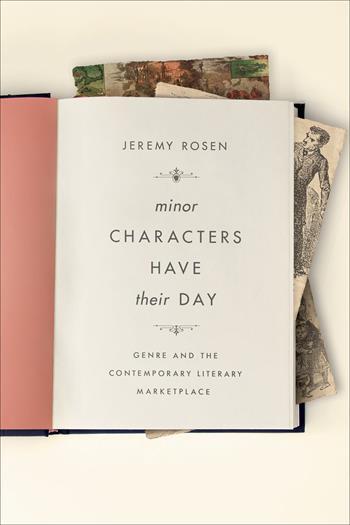Jeremy Rosen. Minor Characters Have Their Day: Genre and the Contemporary Literary Marketplace. New York: Columbia University Press, 2016. vii, 265p. ISBN 9780231177443. US$ 60.00.
Minor Characters Have Their Day investigates a new genre, which Rosen calls “minor-character elaboration,” in which stories from the traditional literary canon are retold from another character’s point of view. Rosen traces the history of the genre from its emergence in the 1960s. The genre was made particularly visible in the 1980s, and then was embraced by contemporary publishers and readers as a way to draw upon the symbolic capital of the literary canon and “liberate” the voices of marginalized groups in a promotion of liberal individualism.
Rosen maps the contours of this hitherto unexplored, but undeniably prevalent, genre. He also uses minor-character elaboration as a case study in a larger analysis of genre theory, exploring the nature of genre as a variable, adaptable, and dynamic textual and rhetorical practice. Some of the minor-character elaboration works he analyzes include Jean Rhys’s Wide Sargasso Sea, Tom Stoppard’s Rosencrantz and Guildenstern Are Dead, George Macdonald Fraser’s Flashman, John Gardner’s Grendel, Christa Wolf’s Cassandra, Anita Diamant’s The Red Tent, Margaret Atwood’s The Penelopiad, J.M. Coetzee’s Elizabeth Costello, Nancy Rawles’s Jim, Ursula Le Guin’s Lavinia, Alice Randall’s The Wind Done Gone, Sena Jeter Naslund’s Ahab’s Wife, Madeline Miller’s The Song of Achilles, and Christopher Moore’s Fool.
Oscillating between close reading and distant analysis, Rosen calls his method of genre study “qualitative empiricism.” He adopts this method, because he feels genre analysis is particularly conducive to different levels of study. Rosen discusses the weaknesses in other researchers’ approaches, such as distant reading (a strictly quantitative approach) or interviewing consumers and producers (which depends on readers and publishers reporting reliably). Rosen studies minor-character elaboration narratives through close reading of the texts and the surrounding paratexts. He describes his method as “purposefully anecdotal,” but argues that it is a useful case study to test larger themes and ideas in genre studies.
There are, of course, certain disadvantages to Rosen’s chosen method. While the oscillation between close reading and distant analysis helps triangulate results, the anecdotal nature of the study leaves an intentionally incomplete picture of the minor-character elaboration genre and its cultural and economic role. However, despite this disadvantage, the book offers an interesting genre case study combining insights from both close and distant viewpoints.
The primary contribution of Minor Characters Have Their Day to the study of the history of authorship, reading, and publishing resides in Rosen’s assertion that genre needs to be studied from three intersecting perspectives: form, cultural history, and the material conditions of production and consumption. In the preface, he argues, “We cannot apprehend the full social and cultural implications of genre, the function of form, without taking into account the commercial and symbolic economies through which genres circulate” (viii). Therefore, Rosen’s study moves from close reading a series of texts to a study of minor-character elaboration texts as instigators of and reactions to historical political and social movements and needs. In this way, Minor Characters Have Their Day offers a book history perspective on the minor-character elaboration genre.
Rachel Noorda
Portland State University


